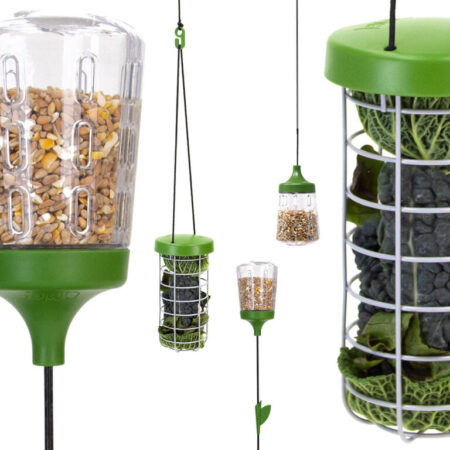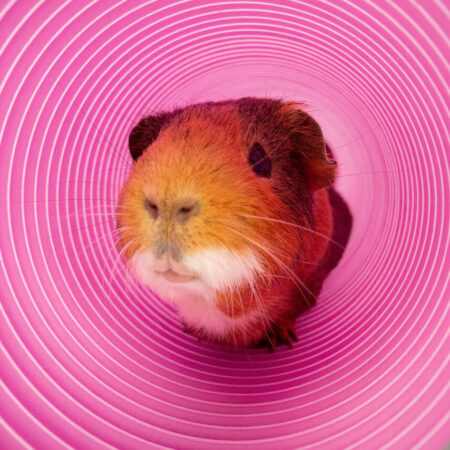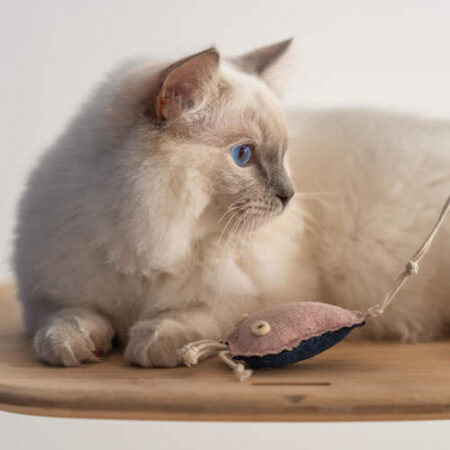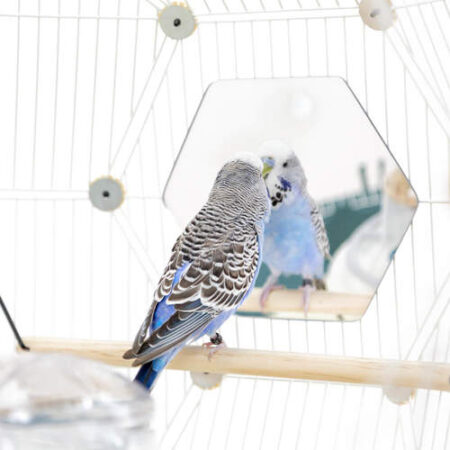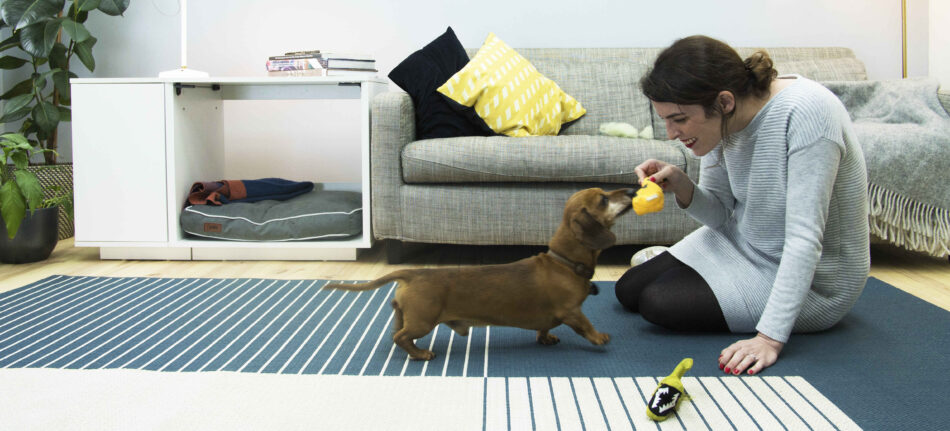
Come rain or shine our dogs need their daily walk… or two, right? But what happens when this just isn’t possible? Sometimes we can’t take our dogs outside for a number of reasons, be it extreme weather conditions, or maybe you’re in isolation. Regardless of your explanation, it’s a good idea to know how to keep on top of your dog’s physical health, as well as having an understanding of how to keep their brains engaged and stimulated whilst inside the home, even for when you’re able to take them for their regular walks again.
Although exercise with your dog inside most definitely does not substitute for your dog’s activity outdoors, there are a number of ideas to help you and your pup out, should you find yourselves in a situation when you can’t leave your home.
Physical Exercise Ideas
Tug of War
Tug of war is a great game to encourage your dog to exercise indoors. Before making a start it’s important that you’ve taught your dog the release command, to ensure they know how to drop their tug toy as soon as you ask them. Once they’ve mastered this, you can begin playing with a durable tug of war toy like the Nuts For Knots Dog Toy Tugger, which you can use to tug back and forth with your pup.
Create an Obstacle Course
An obstacle course is a fantastic way to get your dog active around the house. You can make your course as simple or complicated as you want, and you’ll probably already have most of the equipment you need in your home! You can use a children’s play tunnel for your dog to run through, or even make your own using an old cardboard box, with dog treats to lure your pooch in. If you’ve got carpeted stairs, you can incorporate these into the course for your pet, or even use a hula-hoop or PVC pipes to have your pup jump through. You can really get creative here, as long as your dog is supervised at all times.
Play Fetch in The Living Room
This is definitely one for a rainy day when it’s impossible to even play with your furry friend in the garden. This classic game is one form of indoor exercise that is bound to tire out your dog, but be wary of this one if you’re lacking the space inside (or a great aim!). Remember to always use a soft ball toy to play this game to avoid any damage.
Get a Treadmill
Treadmills aren’t just for humans! If you have a particularly active dog breed that you know is dependent on being outdoors for hours of running, a treadmill is a great way to get their physical activity in and tire them out. It’s not advisable to use a treadmill built for us to take your dogs on, so if you’re considering this option to exercise your dog, you can invest in a purpose built dog treadmill. That way you can be assured that your pup will stay safe, knowing the machine is suitable for their weight and joints.
Mental Exercise Ideas
Try Out Puzzle Toys
Exercising your dog isn’t all about physical activity. Physical and mental stimulation are both incredibly important, with mental stimulation being able to use as much energy as physical exercise for dogs. Invest in a puzzle toy like an interactive dog puzzle, a brain game that will really get your pup thinking, providing them with plenty of mental stimulation. Watch as your dog uses up their energy as they work out how they can get to their treats.
Play Hide and Seek
Although hide and seek can involve a lot of physical exercise, it also requires a lot of brain power from your dog. Find a hiding space and have your dog wait until you call their name to find you. When your pup finds your hiding place, give them lots of praise or reward them with a dog treat.
Teach Your Pup New Tricks
Teaching your dog new tricks is an activity you can do without hardly any space, and something that will keep them mentally engaged. You can begin teaching your puppy basic commands as soon as they arrive home, usually at eight weeks old. However, as your pup gets older these can become more complex and fun. Take a look at the Omlet guide on clicker training, which you can use to teach your dog some impressive tricks with.
Scent Game
You can try hiding some of your dog’s favourite treats to really get their nose (and brain) working. This game is perfect for mental enrichment for your pup, and also one you can try to incorporate into your obstacle course. Before hiding your pup’s treats, teach them the “find it” command, so they know what to do when you release them to go on their scent hunt. You can first hide a treat under a towel and then build this up to hiding treats around the house.
Being stuck indoors is no fun for you or your dog, but hopefully after a bit of inspiration you’ve been able to pick up helpful tips to make it a lot less boring before you can be out and about again.
This entry was posted in Dogs on September 29th, 2021 by yasmingibson

Ever cleaned your pets’ run and found old bits of mouldy cabbage or soggy feed that is nearly impossible to pick out of the grass? There is an easy way of keeping your pets’ treats fresh for longer, while also improving run cleanliness AND keeping your animals entertained!
The Caddi can be hung at any height from all pet runs, trees or other structures in your garden. It’s super easy to fill with whatever you want to give your pets, be it bits of fruit, fresh hay or Feldy Chicken Pecker Balls.
At the moment you will get 50% off Caddi Treat Holders for chickens, rabbits and guinea pigs when you sign up to the Omlet newsletter. Take this opportunity to make your pets’ run funner and more hygienic than ever before!
4 reasons Caddi will improve your pets’ run:
All pets will be happier if their living quarters are tidy and clean, but it’s also important for their health that both their coop or hutch and run are kept hygienic. Mouldy food left on the damp ground can make a chicken, rabbit or guinea pig very ill, so having a Caddi to keep it in will make it much easier for you to spot anything that’s gone off, and to remove it in a second.
Food, treats or hay that is left on the ground on the run will go off very quickly, especially at this time of year when temperatures can vary dramatically between day and night and there is likely to be more rainy days. With the Caddi, the treats you leave your pets will keep fresher for longer as they won’t come into contact with the wet ground. They will also be kept dryer thanks to the waterproof top.
The end of summer means that there will be less food available for wild animals like rodents and small birds, and they are likely to approach your garden and your pets’ home in search for tasty morsels. By putting feed, hay or vegetables in the Caddi rather than scattering on the ground, you are making things more difficult for uninvited visitors!
As the treats, veg or hay you are giving your pets are kept contained in one place and won’t get stepped on by muddy feet, they will be crunchier, cleaner and better tasting. As the swinging motion of the Caddi offers stimulation and entertainment, your pets will truly enjoy snacktime!

Buy now and get 50% off when you sign up for the Omlet newsletter!
Terms and conditions:
This promotion is only valid from 28/09/21 – midnight on 03/10/21. Once you have entered your email address on the website you will receive a discount code that can be used at checkout. By entering your email you agree to receive the Omlet Newsletter. You can unsubscribe at any point. This offer is available on single Caddi Treat Holders only. The offer does not apply to Twin Packs, Twin Pack with Peck Toys or packs with Feldy Chicken Pecker Balls. Excludes all other chicken accessories. Offer is limited to 2 Caddis per household. Subject to availability. Omlet ltd. reserves the right to withdraw the offer at any point. Offer cannot be used on delivery, existing discounts or in conjunction with any other offer.
This entry was posted in Chickens on September 28th, 2021 by linnearask
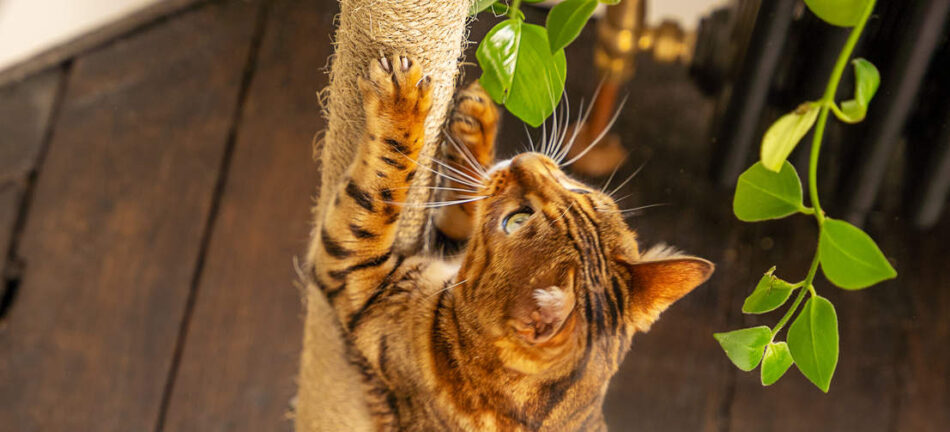
Bengal cats have striking features, bearing a resemblance to leopards with their piercing eyes and speckled, marbled coats. As their appearance suggests, this breed is a hybrid of an Asian Leopard Cat crossed with a domestic cat. So, with being part wild animal, you’ll need to think carefully before deciding to introduce the very intelligent Bengal into your home.
With the new arrival of any kitten, you’re going to have your hands full, as both you and your new furry friend adjust to a new life. It’s a good idea to get prepared by going through a checklist of everything your Bengal kitten is going to need and anything else that will make for an easier transition. If you’re struggling on where to begin, here’s a list of a few things to get you started:
A Cat Carrier
When bringing home your new Bengal, you’ll want to place them in a cat carrier, with something absorbent to line it, in case your Bengal kitten has any accidents on the journey. One piece of advice is to spray the carrier with pheromones which will help to make your kitten feel safe.
The carrier should be large enough for your Bengal to comfortably lie down in, and adjust themselves. It’s also important to remember that your kitten should not come home any earlier than 8 weeks old, as any sooner is too premature to be separated from their Mother.
A Scratching Post
Cats have a natural desire to scratch, so if they’re not provided with the right outlet to do so i.e. a scratching post, you may find that your prized furnishings are quickly destroyed! Not only will a cat scratching post help to maintain your Bengal’s claw health, they’re also a great tool to help release your cat’s hormones and excess energy.
If your house has enough space, cat trees are an even better option! The Omlet Freestyle Cat Tree will grow with your kitten, as you can customise your tree to add more accessories for your Bengal to scratch at and play with, as they become more adventurous.
A Cat Bed
Cats can spend up to sixteen hours of the day sleeping, and kittens, even longer! Cat breeds like Bengals however, will sleep slightly less due to their playful nature. Nonetheless, it’s important that you invest in a good quality cat bed, so that your kitten can get those precious hours of sleep in.
Their bed should be somewhere secluded, where your kitten can be left alone and away from any other pets or people. Comfort is key, so make sure your Bengal’s bed is cosy and somewhere they can retreat and rest.
Food, Water and Bowls
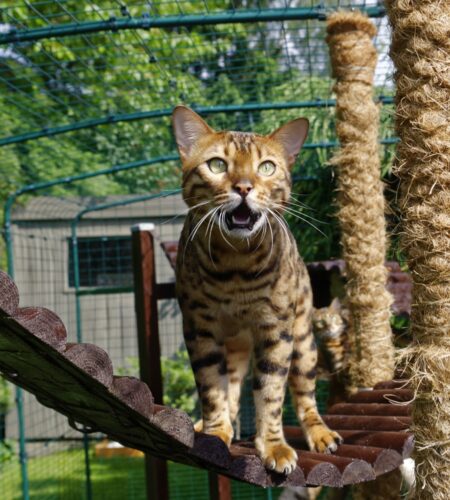
Bengals need a diet of good quality food, to give your kitten the best start. Make sure that the food you choose for your young cat is age appropriate, along with choosing appropriate sized bowls for their food and water. Cats can have a combination of dry food and wet food, and kittens need a specific diet suited to their age. From around 12 weeks, your Bengal kitten should transition to eating more dry cat food, so it’s a good idea to check with the breeder on what they recommend.
A Litter Box
Despite the incredibly active nature of Bengals, they can actually live comfortably as indoor cats, as long as they have enough physical and mental stimulation to stop them from becoming bored. Many Bengal kittens will have already been litter box trained by the breeder, however owners still need to continue to encourage correct use of the litter box by using positive reinforcement when they use it.
Also consider the type of cat litter you’re using for your Bengal cat. Take a look at the full Omlet range of cat litters to find which will be best for your kitten.
Plenty of Toys
Before bringing your new Bengal home, you should be aware that these cats need a lot of entertainment! Bengals love to play and a wide range of toys will help to keep your kitten stimulated and out of trouble. Bengals are highly energetic, so toys that encourage their hunting instinct, like the Kong Kitten Mice are perfect for your new kitten. As your Bengal grows, how about trying the Omlet wand cat toys with catnip, that will provide your cat with endless hours of fun!
Before getting a Bengal kitten it’s important to take into consideration not only these essentials but to carefully conduct thorough research on the breed and your prospective breeder. Remember, responsible breeders should also be looking at whether your lifestyle and home is suitable for their kitten to be going to. So, if you think this is the right breed for you and you do decide to get a Bengal kitten, one thing that can be guaranteed is a whole heap of fun for the whole family!
This entry was posted in Cats on September 21st, 2021 by yasmingibson
It’s often hard to tell if a hen is laying. Hens do not produce the same number of eggs each week throughout the year, and there may be health- and environment-related changes to egg production, too.
It’s useful to know when a hen stops laying, as you can then give her a quick health check to identify the cause of the interruption. But how do you tell which chicken is not laying eggs? In a coup of six hens, in which the daily average number of eggs is five, it’s not immediately obvious which hens are laying.
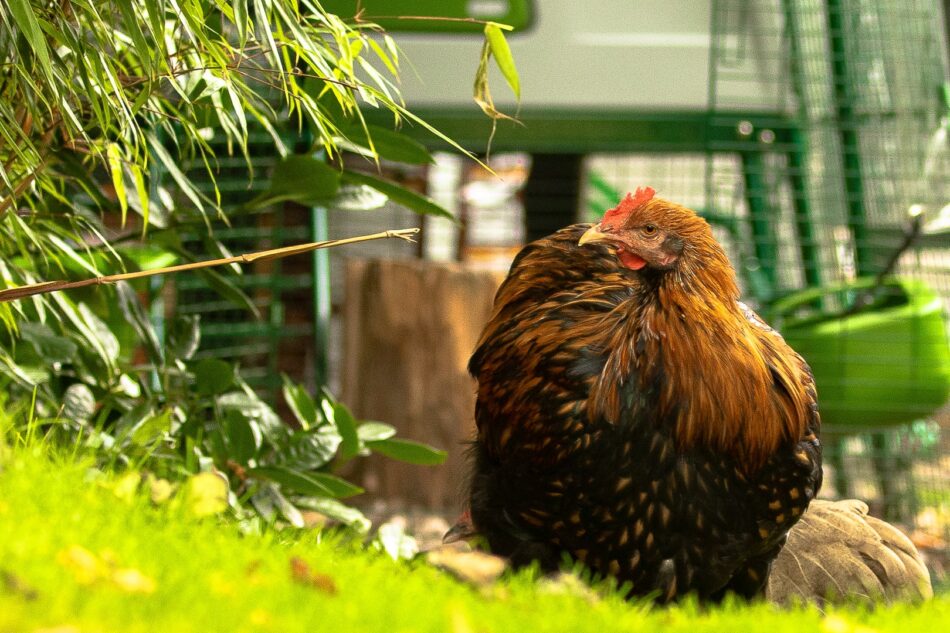
Seven signs that a hen has stopped laying
1. Age. This is the most obvious cause of a drop in egg production. Over her egg-laying years, a hen’s production will tail off. This is natural, and it does not mean the chicken has reached the end of its usefulness. All hens play a part in the social order of a coup, and a bird reaching the end of its egg-laying life will still be as feisty, active and lovable as the younger birds – and she’ll still lay the occasional egg.
2. Moulting. This occurs every year once a hen is 18 months old (although younger birds may shed feathers, too). The signs are very clear – lots of feathers lying in the coop, and bare patches appearing on the hen. During this time, chickens need to produce lots of new feathers, which is a physically demanding process. Consequently, egg-laying is reduced, and sometimes there will be several days without an egg. The moult tends to occur in the autumn, but it depends on when the hen first started laying. Moulting takes 8 to 12 weeks, occasionally longer.
3. Vent. A dry vent – the hole through which the hen lays her eggs – is a sign of no production. In a hen that is still laying, the vent will be moist.
4. Abdomen. Your chicken’s abdomen area should feel soft and rounded. If the area below the breast bone is hard and swollen, this can be a sign of egg peritonitis, a bacterial infection in the chest cavity. Your chicken will still produce a yolk but is free-floating in the abdominal cavity. Affected hens will stop therefore either completely stop laying eggs or only lay soft-shelled, thin, or misshapen eggs.
5. Comb and wattles. A healthy laying hen tends to have bright red comb and wattles. These become duller when she is about to lay, but turn bright red again once she has laid the egg. If the comb and wattles are pale or dull looking all the time, it could be a sign of illness.
6. The food dye test. If you put a small dab of food colouring on a hen’s vent, the colour will be transferred to the egg. The colour that fails to appear tells you who the non-layer is. This is only practical in smaller flocks, though, given the limited palette of food colourings…
7. No eggs. This isn’t as silly as it sounds! If you only have a few hens, and they are different breeds, you will often come to recognise which eggs are produced by which hen. In this case, the sudden disappearance of one particular egg-type will tell you who’s not laying.
Five reasons why hens stop laying eggs
1. Temperature and sunlight. Seasonal factors play a part in egg production. As the daylight hours lessen in autumn and winter, hens tend to lay fewer eggs. In the depths of winter, the low temperature becomes the cause, as a hen needs all her energy to produce body heat. With her resources diverted to this essential function, egg-laying is put on hold.
2. Stress. Any form of stress will tend to interrupt or stop egg production. Stress can be brought on by several things, including parasites, bullying, injuries and fear (of noisy dogs, for example).
3. Diet. Poor diet can impact egg production, too. If a hen is laying, she needs all the essential nutrients – not just calcium – to produce eggs. Top-quality layer’s pellets will contain everything the hen needs. A hen that fills up on treats before filling up on pellets may become malnourished and stop laying. It’s a good idea to let the chickens feed on their pellets first thing in the morning and last thing at night, and only offer corn and treats in the middle of the day.
4. Broodiness. A broody hen – that is, a hen who has decided to sit on her eggs in an attempt to hatch them – will stop laying. There are several ways of discouraging broodiness, but some hen breeds are more prone to it than others. If all attempts to dissuade her from leaving the nesting box, you have the consolation that after 21 days – the time it would take for a fertilised chicken egg to hatch – the hen’s self-inflicted ordeal will be over and she will resume normal life – including egg-laying.
5. Change of routine. If you move the hen house or introduce new birds to the flock, or if one of the hens dies, the birds’ routine and pecking order will be interrupted. This often causes them to stop laying for a short time, until their social lives settle down again.
Four ways to encouraging laying
1. Comfy coop. The first thing to do is to make sure the hens’ environment is adequately equipped and comfortable. Check for red mites, as an infestation of these nocturnal parasites can stop egg production. Reduce drafts and make sure there is no bullying going on – often a sign of an overcrowded hen house. You can read more on how your chickens’ coop can impact their laying in our blog How Long Can Chicken Eggs Stay in the Coop?
2. Light. Some chicken keepers install lights in the coop to encourage laying in the colder months of the year. However, bear in mind that a chicken can only lay a finite number of eggs in its lifetime. If she’s naturally programmed to lay 1,000 eggs, encouraging her to lay regularly throughout the winter will simply reduce her laying life.
3. Eggs. If an apparently healthy hen isn’t laying, she can be encouraged by leaving eggs in the nesting box, or placing rubber eggs, or even golf balls, in the spot where she is supposed to lay. The sight and feel of these will encourage her laying instincts.
4. Reduce stress. Discourage dogs from disturbing the hens, and make your chicken run and coop are as predator-proof as possible. Equally important, make sure the run isn’t overcrowded, and provide enough roosting space in the coop for all the hens to rest comfortably.
Disappearing eggs
If your hens are free-ranging, they will sometimes lay an egg in a quiet corner of the garden, meaning that your eggs are not in fact disappearing but rather being hidden out of sight! This can become habit-forming, and if she’s doing it in secret, you may reach the incorrect conclusion that the hen isn’t laying.
A healthy hen who does not appear to be laying may be the victim of egg sabotage. A predator, a human thief or an egg-eating chicken might be removing the evidence of her labours. The best way of preventing this is to encourage your hen back to the nest box for laying. In crowded coops, a hen will sometimes seek an alternative laying place if the boxes are all full when she feels the urge to lay.
As a hen ages, she will produce fewer eggs. If you are uncertain of the age of your chickens, there is a simple test you can conduct that might sometimes give you a clue. Place your hand gently on a hen’s back. If she immediately squats down, it means she is still fertile and therefore producing eggs. Hens squat when they are mating, and it is an automatic response.
Although egg production drops as a hen ages, it will often continue throughout her life. The occasional egg from an old hen always reminds you what a wonderful friend she’s been throughout your long time together!
This entry was posted in Chickens on September 20th, 2021 by linnearask
? The BIG Bed Sale! ?
Save up to 25% on Bolster Beds, Topology Beds and Donut Beds for a limited time only! Now is the perfect time to treat your pawesome pal to a cosy new bed this autumn ?
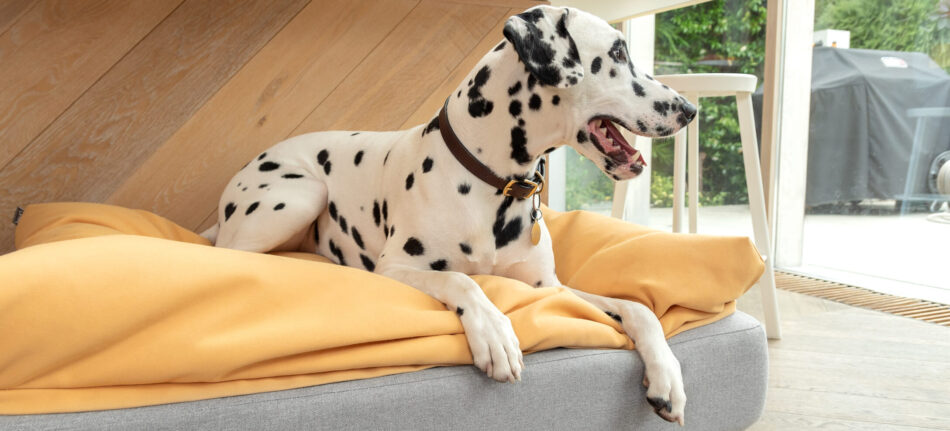
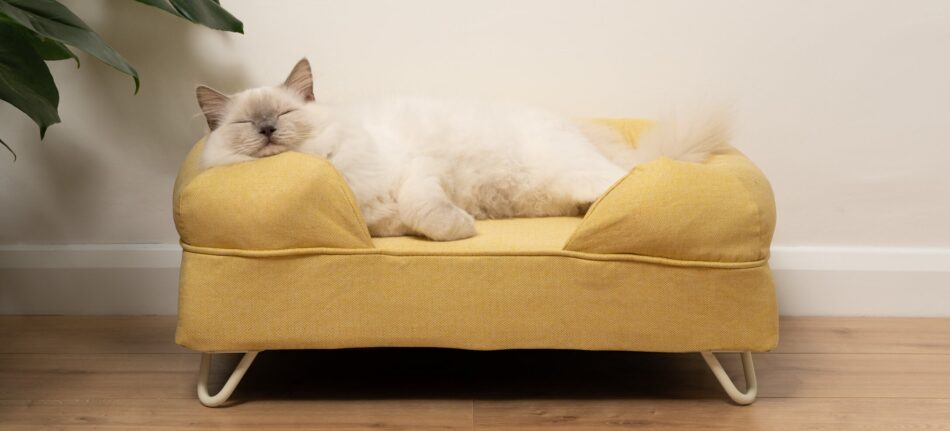
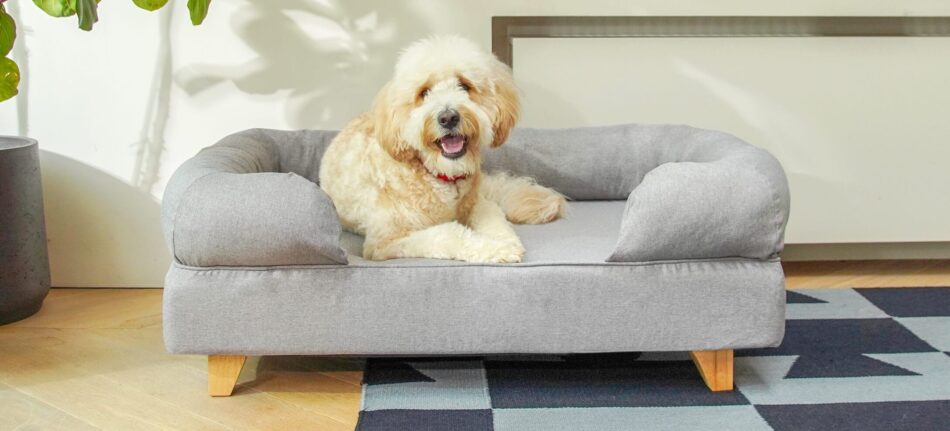

Terms and conditions
The promotion for 25% off beds is only valid from 14/09/21 to 17/09/21. The promotion only applied to Bolster Dog Beds, Topology Dog Beds, Maya Donut Cat Beds and Bolster Cat Beds, including covers, toppers and feet. Excludes all other dog and cat accessories. No promo code needed, discount has already been applied. While stocks last. Subject to availability. Omlet ltd. reserves the right to withdraw the offer at any point. Offer cannot be used on delivery, existing discounts or in conjunction with any other offer. You are not able to use a discount code on your order if your basket contains one or more discounted products.
This entry was posted in Cats on September 14th, 2021 by linnearask
If you have done your research and decided that a rabbit is the pet for you, you now have the task ahead of choosing which rabbit breed you would like to get. There are lots of wonderful breeds to choose from, and they all have their own specific features and characteristics. To help you pick the right rabbit for you and your family, we’ve put together a list of things to think about:
Size
Rabbit breeds differ in size, from small Netherland Dwarfs to large Flemish Giants. Smaller breeds tend to be more skittish and nervous, whereas larger rabbits are generally more gentle and less aggressive.
Larger rabbits will naturally need more food, and more space. But don’t think that small rabbits will be fine with limited space, often littler bunnies run around a lot more as they have more energy.
Child-friendly rabbit breeds
While young children should never be given the main responsibility of looking after a rabbit, if you have children in the family it’s good to find a breed that is generally happy to be touched and handled.
A lot comes down to personality, but there are some breeds that are known to get along well with children, like French Lops and Dutch Rabbits.
Reason for getting a rabbit
Think about why you are getting a rabbit, and what is important to you in a pet. Are you happy to just watch them enjoy themselves in the garden, or would you really like to have a rabbit that is sociable and wants to come to you for cuddles? Would you like to breed for your bunny, or show it off in rabbit shows? Take a read of our New Rabbit Checklist blog so that you have everything you require for when the time comes to pick up your new fluffy friend!
Looks
Rabbits come with various fur lengths, colours, ear types and builds. You probably have an idea of what you would like your pet rabbit to look like, but it’s worth exploring a few different breeds to see what’s out there.
It’s important to remember that different breeds require different amounts of grooming and looking after. Long fur, like that of the Angora rabbits, will for example need brushing daily or a few times a week, so you will need to consider if that is something you will be happy to do.
Meet the rabbit in person
While rabbit breeds have characteristic features and temperaments, a lot also comes down to breeding and personality. If possible, try to go and see the breeder or person you are buying your rabbit from, or the center where you’re adopting from.
If your rabbit is still small, watch how they interact with their surroundings and siblings, and if possible, see what the mother is like. Make sure the rabbit doesn’t have any obvious health problems, and try to get a feel for its temperament. If it’s important for you that the rabbit is happy to be picked up, make sure they have been around humans from the start and have regularly been handled.
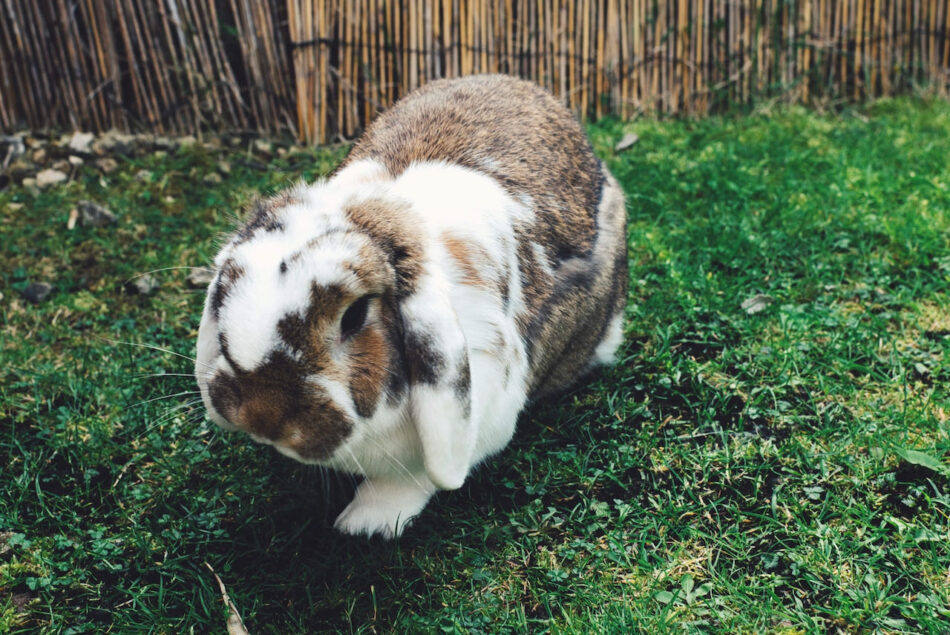
Photo by Cameron Barnes on Unsplash
Genetics
Read up on specific breeds’ susceptibility to different health problems. Some breeds tend to have a higher risk of developing problems with their jaws, others with joints, or ear mites. With good care the absolute majority of rabbits will be happy and healthy, but it’s a good idea to research problems in order to prevent them.
The expected lifespan also differs somewhat between breeds. The majority of rabbits live between 5-8 years, but some breeds are known to often live for over 10 years. This is obviously a bigger commitment, so it’s worth thinking about.
Consider these things when choosing a pet rabbit. If you know what you want, here are some of our suggestions:
You want a gentle family bunny that is good with children
You have had rabbits before and want something special
You want to keep your pet rabbit indoors
You want an intelligent rabbit that is very energetic and playful
You want a really fluffy and cuddly rabbit
This entry was posted in Rabbits on September 14th, 2021 by linnearask


Your chickens’ coop should be a space for your flock to eat, drink, lay eggs, and sleep. It should also be a place for your chickens to feel safe and be protected from the outside elements or any danger. However, sometimes chickens may suddenly decide that they do not want to go into their coop at night, which can be for a number of reasons. Here are some explanations as to why this could be happening.
A Broody Hen
Hens can get broody, regardless of if you have a rooster. Although many hens will decide to stay in the nest of their coop so that they can sit on their eggs, others like to search for a quiet space away from the coop, which can mean remaining outside the coop all night.
Moving a broody hen can be highly stressful for them, so should you decide that it’s best to move your hen inside the coop, due to safety concerns, you need to take great care when doing so. One way to start is by collecting your hen’s eggs regularly (twice a day). Be sure to wear leather gloves when doing so, as a broody hen is likely to be aggressive around you as they are very protective of their eggs. You’ll also want to reduce the light supply when you move her, as the moving process situation will be less traumatic in the dark.
Predators
Predators such as foxes, cats, rats, and badgers could be one reason as to why your chickens have stopped going inside the coop at night. These animals will spook your flock, with smaller predators such as badgers having the potential to gain access inside the coop by climbing over the fencing, or squeezing through small openings in the coop’s wiring.
Luckily, there are a few steps you can take to deter these animals and have your chickens back in their coop every night. One option is to get a motion sensitive light installed, which will scare off any unwanted guests. Alternatively, take a look at the Omlet chicken coop range. All of the Omlet coops are predator resistant, which will reassure you that your chickens will be safe from any night time visitors. With anti-tunnel skirts that lie flat on the ground, and heavy duty steel weld mesh, these features will help to prevent animals from digging in. You can also purchase the Omlet automatic coop door which shuts your chickens away in their coop at night to keep your flock secure, enclosing them until the time you set for the door to open in the morning.
An Overcrowded Coop
Chickens need their own personal space, hence why many chickens are also kept free range. Not only is overcrowding an unpleasant experience for chickens, causing them to avoid the coop at night, it can also lead to further complications such as the build up of ammonia and an increase in disease. The solution? The more space the better! For size reference, the Omlet Large Eglu Cube chicken coop can comfortably accommodate six large hens or up to ten bantams.
Tensions Amongst Your Chickens
 Unfortunately, bullying amongst chickens happens, and isn’t actually too uncommon of a problem. Chickens naturally create a pecking order, whereby the flock will establish themselves in a social hierarchy of strongest to weakest chicken. However, if aggressive behaviour continues after the head rooster, or the dominant hen in their absence, has found their way to the top of the ladder, you may be dealing with a bully. Common signs are missing feathers from a chicken’s back, unusual weight loss, reduced egg production, or blood from where the victim has been pecked, all of which could lead to a chicken/s refusing to go into their coop at night.
Unfortunately, bullying amongst chickens happens, and isn’t actually too uncommon of a problem. Chickens naturally create a pecking order, whereby the flock will establish themselves in a social hierarchy of strongest to weakest chicken. However, if aggressive behaviour continues after the head rooster, or the dominant hen in their absence, has found their way to the top of the ladder, you may be dealing with a bully. Common signs are missing feathers from a chicken’s back, unusual weight loss, reduced egg production, or blood from where the victim has been pecked, all of which could lead to a chicken/s refusing to go into their coop at night.
To stop the bullying, and therefore get your chickens back in their coop at night, first try to establish the cause. Common reasons for bullying can be an injured or ill bird, having a large flock, or your chickens being bored. However, should the bullying continue after attempting to resolve what you believe to be the cause of conflict, you can purchase anti-pecking spray, which will discourage feather pecking. Alternatively, separate the bully from the flock. Isolating the bully for a week may mean that they lose their dominant position in the hierarchy once they are reintroduced.
Mites and Parasites in the Coop
Pests are a very common cause for chickens to have stopped going to their coop at night. Red mite in particular is a likely culprit, a parasitic mite that lives inside chicken housing and lays eggs in cracks near nests. They can make your chickens restless at night, as they live inside chicken coops and crawl onto the chickens to feed on their blood as they sleep. Only active during warmer weather, red mites are also more likely to strike wooden coops.
Red mites are not the easiest thing to get rid of, however, one solution is to purchase red mite treatment, which works by immobilising pests with its sticky consistency. Rest assured, it’s also completely safe to use in the chicken feeding area, so you do not have to have any concerns about your flock digesting the product.
Luckily, chickens are creatures of habit, so once you’ve identified the cause, you should be able to get your flock back into the coop at night in no time!
This entry was posted in Chickens on September 13th, 2021 by yasmingibson

With over 70 different accessories to choose from, the Omlet Freestyle cat tree allows you to create a play area that suits your cat, their likes and abilities. You might have an idea of which accessories would best suit your cat and home, but to give you a helping hand, we’ve put together some amazing kits if you don’t want to create your setup from scratch. Plus, when you and your feline friend have discovered the ingenious design of the Freestyle cat tree, you can always extend and adapt the setup with more poles and accessories. Have a look at the 6 starter kits to find the perfect Freestyle cat tree.
The Beginner – novice necessity
The Beginner is the ideal starter kit to get your cat used to the Freestyle. It features a simple platform that can be placed at any height on your pole, accessorized with a stylish blue woven cushion to provide your cat with extreme comfort while resting off the ground.
This kit also comes with a super stable sisal scratcher kit for your pets’ grooming needs. The sisal is durable and feels nice against the paws, and is strong enough to sharpen those precious nails.
The Beginner is an economical solution, perfect if your cat is hesitant to try new things, or you have limited space in your home.
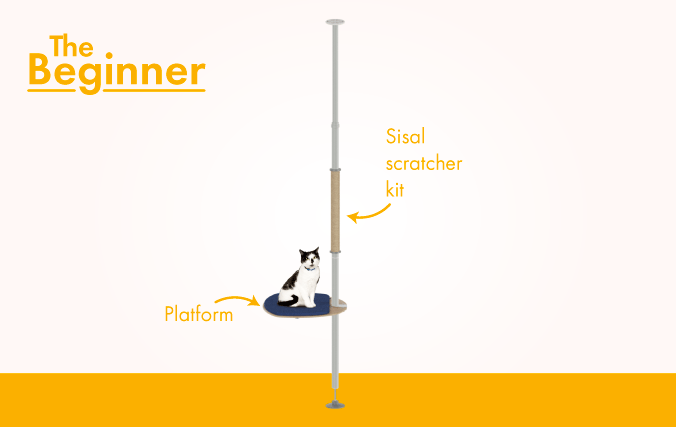
The Top Cat – curious kitties
The Top Cat is super stylish, featuring yellow cushions for the platform and steps that’ll blend in beautifully in your home. It also comes with a plant pot that can be positioned at any height on the pole and allows you to fully utilize all vertical space.
The Top Cat will suit any cat who likes to watch the world go by from a vantage point, safe from small humans and other pets. It also comes with a replaceable sisal scratcher kit, making it an ideal starter to build on from as your cat gets more adventurous.
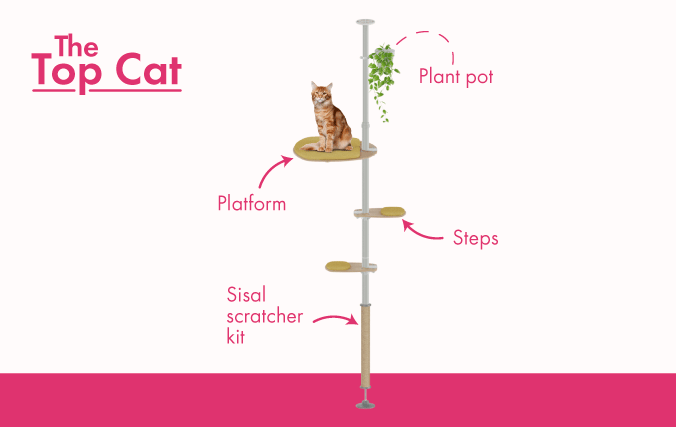
The Ladder – courageous climbers
This kit comes with four bamboo steps that you can position at the perfect height to create a ladder for your cat to climb up to safety. At the top of the pole you can put the platform with a super cosy woven den where your cat can enjoy secluded naps.
Additionally, The Ladder comes with a treat dish that can be put by the den for snack time, or at any height up the pole in case your cat gets hungry mid-climb.
The Ladder is perfect for any cat who likes to be high up and away from the noise of the household. The flexibility of the steps allows you to adjust the difficulty of the climbing based on your pet’s age and abilities.
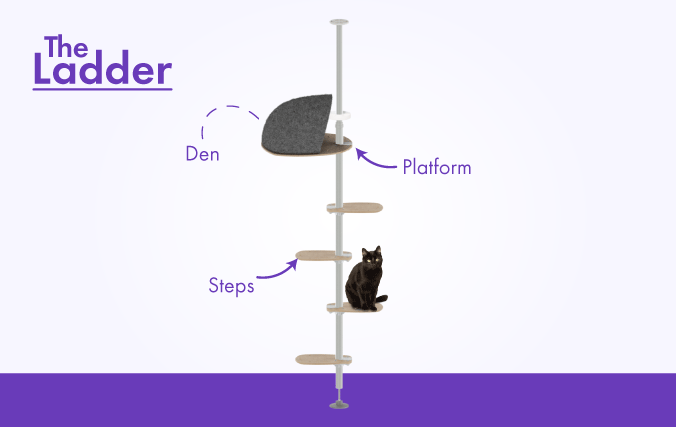
The Sleeper – cat nap connoisseurs
The Sleeper kit is perfect for super relaxed cats who will settle for nothing less than supreme comfort. The platform and steps come with beautiful woven cushions that will provide a soft surface while lounging and inspecting the home. The Sleeper also includes a secluded den that your pet can withdraw to for their extremely important naps.
This kit also includes a sisal scratching post that your cat can use for stretching out their bodies after a sleep, while also sharpening their nails.
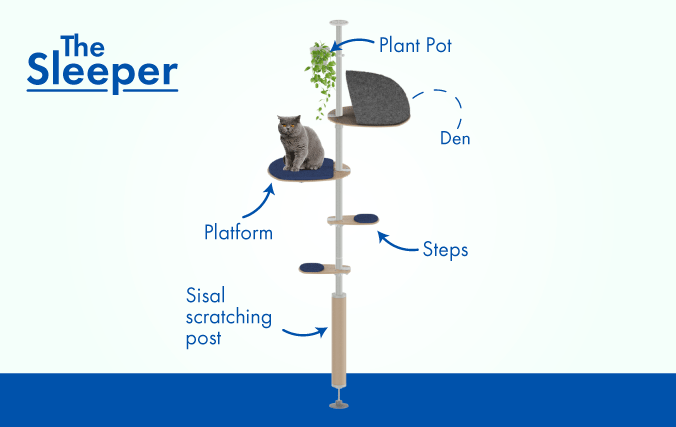
The Scratcher – kitty manicure essential
The Scratcher is the perfect solution for cats who take grooming seriously. The kit features both a sturdy sisal scratching post that wraps around the vertical pole for full-body stretching and a pole-to-floor ramp with a wave cardboard scratching box. Persistent scratchers will love this option and flexibility!
The Scratcher also comes with a cosy woven hammock for post-play naps away from the hustle and bustle.
If you have a cat that insists on sharpening their claws against furniture and upholstery in your home, The Scratcher is the ideal kit for you. By giving them a designated stable spot for grooming, they should soon learn where to go. Additionally, all scratching parts can be recycled and replaced once worn, making Freestyle a long-term solution for all.

The Explorer – fearless felines
If you have an adventurous cat that loves jumping, climbing and scratching, you should try The Explorer. This starter kit includes most of the Freestyle accessories positioned over two vertical poles, so your cat can choose an activity based on their mood on a specific day.
The Explorer has two different types of scratchers, steps to allow your cat to get up the tree, a bridge to lounge on and a secluded hammock to rest in when everything has been explored. As if that wasn’t enough, it also comes with a decorative pot for your cat-friendly plants, as well as a stainless steel bowl for food or treats.
The Explorer is perfect for young, active and agile cats, or for multi-cat households.
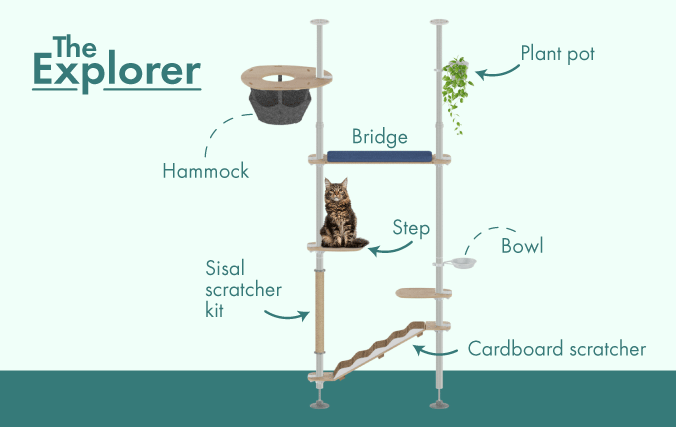
Omlet and your cat
We understand that all cats are different, which is why we’ve made it super easy for them to make their mark with our customizable kits. You can position the accessories yourself and simply move them around when you’re ready to try something new. Or, you can build your own system using our handy Freestyle cat tree configurator. Discover a new way to play with Omlet’s Freestyle cat trees. And, shop our range of other ingenious cat products such as cat beds, cat blankets, and cat scratching posts, created by pet lovers and expert engineers to help you continue building a wondrous connection between you and your pet.
This entry was posted in Cats on September 10th, 2021 by linnearask
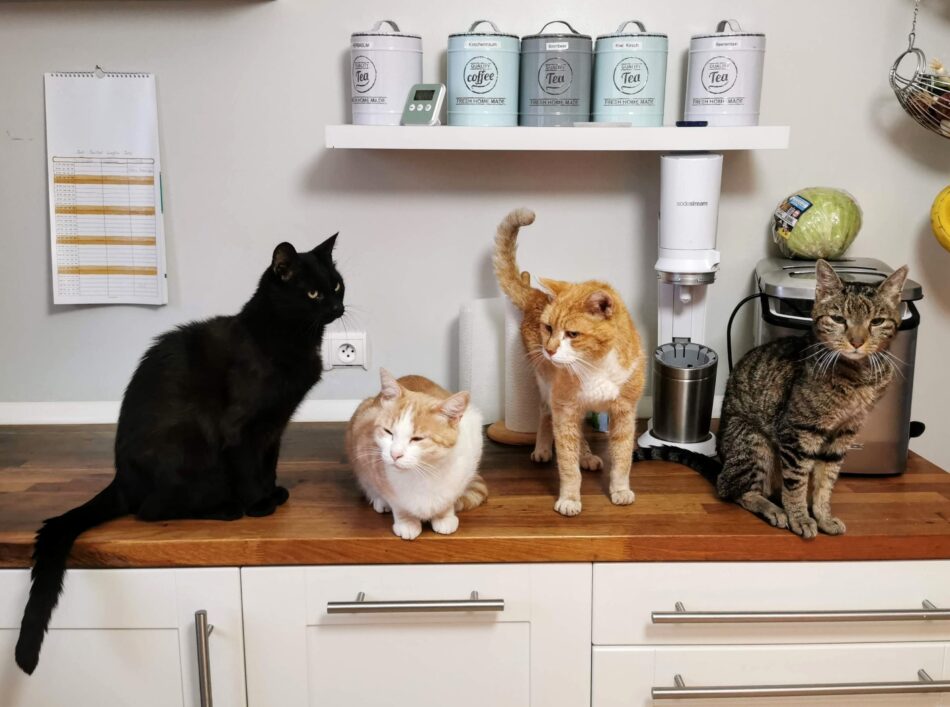
Photo by Dietmar Ludmann on Unsplash
Despite many cats enjoying being independent creatures, according to the PDSA PAW Report, 43% of cats in the UK now live in multi cat households. Whilst it’s understandable why so many of us give in to the temptation of introducing another feline friend into the home, it’s also important to be cautious of the potential onset of cat behavioural issues such as aggressive behaviour i.e. hissing, growling, or chasing as a result of doing so, and to consider if the dynamic of a multi cat household would work for you and your family. However, if you do decide to take the plunge, here are some tips on how you can try and keep the peace.
Plenty of Exercise
Providing your cats with plenty of exercise will help to keep them at a healthy weight and keep them stimulated. Both are important for all cat owners, even those who only have one cat. However, for cats who live amongst other cats, keeping active can aid with avoiding a potential build up of excess energy, which can sometimes manifest itself as aggression towards other cats in the household.
One way to help keep your cats exercised is through play, which will also help to strengthen the bond between you and your furry friend. How about trying the new Omlet catnip wand toys that will encourage your cats to chase and provide them with endless hours of fun. Another great way of exercising your pets is to invest in a cat tree. Cats love climbing and scratching, so a cat tree is one sure way to encourage this and keep them entertained.
Use Pheromone Diffusers
Pheromone diffusers are an odourless plug-in product that works by producing pheromones, or chemical substances, that your cat naturally releases when they either rub against surfaces, scratch at items, bump heads with humans or other cats, or spray. Pheromone products mimic how pheromones would naturally send messages between cats, meaning that they can help in multi cat households to have your cats to feel more relaxed, and reduce their stress levels.
Multiple Litter Boxes
It’s important that your cats have their own litter box when they live with other cats. This is because of their territorial nature, which often means that cats like to ‘claim’ where they go to the bathroom and do not like this area to be shared. If cats feel as though their territory is under threat, this can lead to aggressive behaviour such as fighting.
Furthermore, most cats will refuse to use a dirty litter box, which will likely happen should you only provide a single litter box for several cats, as of course, their waste will accumulate more quickly than if your cats were to have their own. The general rule of thumb is that you should have one litter box per cat, plus one spare to have placed out in your home.
Separate Feeding Stations
Cats like to be alone when they’re eating, meaning that if you have multiple cats, they will require separate feeding stations at mealtimes. When cats are forced to share the same area for feeding time with another cat, it can take away from their predatory instinct to hunt and eat by themselves, which inevitably can induce anxiety and aggressive behaviour. In a multiple cat home, cats may see a shared feeding area as an opportunity to compete for food, which could result in you having a ‘food bully’ on your hands. As well as providing your cats with their own food bowls, give them each a designated space in the home to eat any from any other cats.
Furthermore, creating this divide will help your cats to stay healthy by having them fed equally, or in accordance to their own specific dietary needs, as it ensures one cat cannot access the other’s food. For example, factors such as the age, weight, or medical condition of your cat/s may mean that they have to be fed different diets. Therefore, it’s fundamental that you leave each cat’s bowl out of reach from any potential cat food thieves!
Personal Space
By nature, many cats need their own personal space, even when they’re not eating. It’s a good idea to have an area in the home that they can go to escape to by themselves, away from both humans and other animals. If you have the room, it’s advisable that each of your pets have at least one of their own private areas in the home that they can go to without being disturbed and becoming overwhelmed. This may even be a cardboard box if you’re limited for space, but be sure this is away from the hustle and bustle of the home or outside.
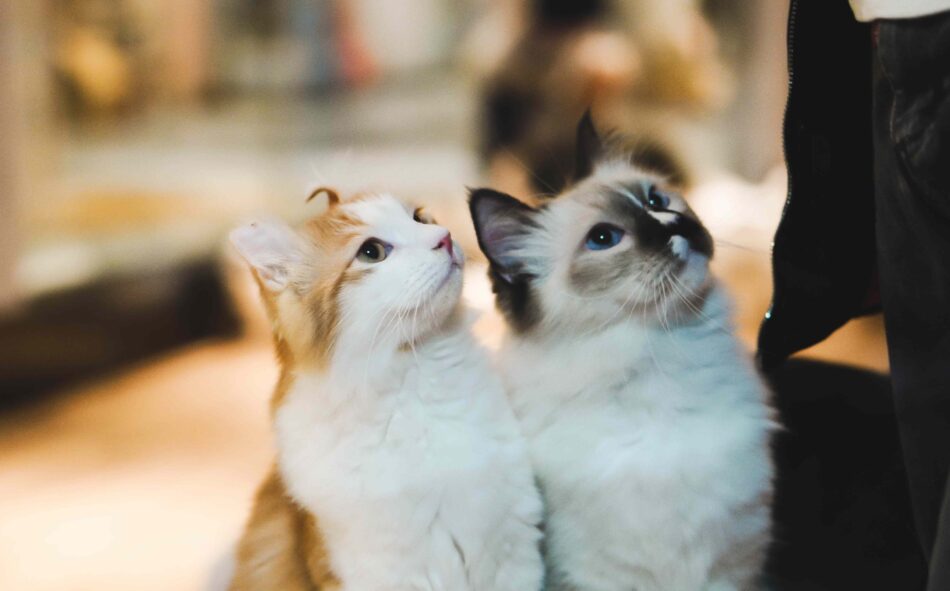
Photo by Kelly on Unsplash
Introducing a new cat can be a difficult time for you and your already existing pet, but fortunately, it’s not impossible to make multi cat households work. So after a bit of advice, hopefully the transition period will be a lot easier. However, should you notice any signs of aggression between your cats, it’s important to seek help from a veterinarian before these issues get out of control.
This entry was posted in Cats on September 7th, 2021 by yasmingibson
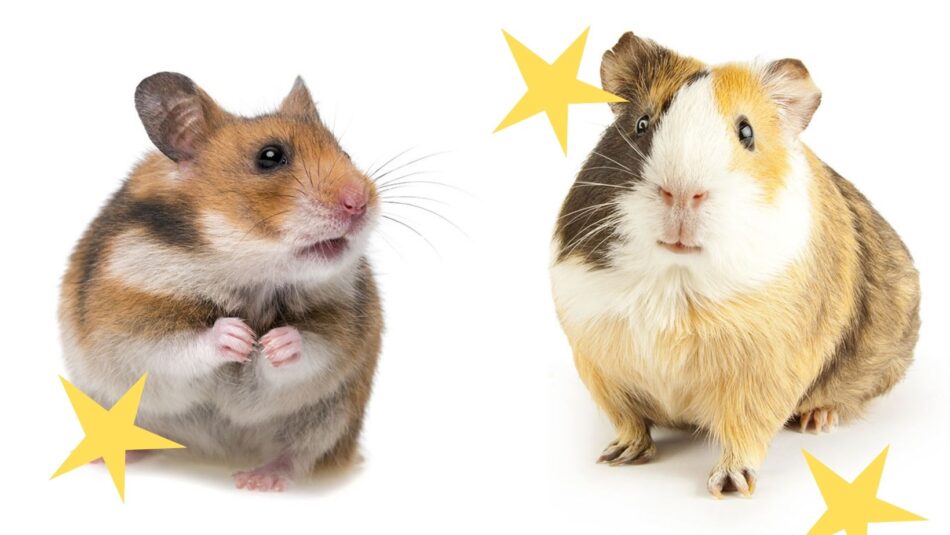
Hamsters and guinea pigs are relatively low maintenance pets that make a great choice for new pet owners. The two animals have several fundamental differences, though. Knowing what these differences are will help you make the right choice when choosing your pet.
Wild hamsters live across large areas of Europe and Asia, notably in Syria, China and Russia, which are the ancestral homes of most hamsters kept today as pets. These little rodents prefer dry, warm climates.
Guinea pigs are native to the mountainous regions of South America – Colombia, Ecuador, Peru and Bolivia. However, they belong to the same broad family as hamsters – the rodents. This kinship is a bit misleading, though, as the animals have distinctly different needs and dietary requirements.
Hamster vs Guinea Pig
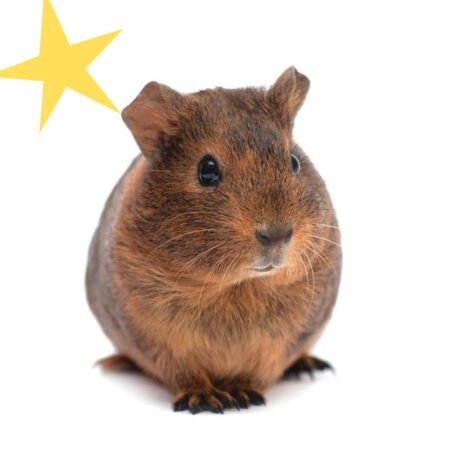 While these two critters do have things in common, their different habitats and ways of life mean that a hamster’s home setup is very different from that of a guinea pig.
While these two critters do have things in common, their different habitats and ways of life mean that a hamster’s home setup is very different from that of a guinea pig.
One major thing that differentiates hamsters and guinea pigs is lifespan. Hamsters have shorter lifespans than guinea pigs, generally living for 2 to 4 years. This is because they are small and have metabolisms that work much faster than their guinea pig cousins. Guineas generally live from 5 to 8 years, with some individuals reaching 10 years.
Another key difference between the two is their size. As we mentioned above, hamsters are much smaller than guinea pigs, with the average size being in the region of 5-15cm. Even the smallest guinea pigs are larger than the biggest hamsters, with the average guinea being 20-30cm long. This means that guinea pigs need larger enclosures.
While the size of the animal and its enclosure needs to be considered, these factors don’t have a huge impact on general pet care. The following differences are the ones that need to influence your decision.
The four main differences between hamsters and guinea pigs
1. Sleeping patterns
This is possibly the biggest difference between the two species. Hamsters are generally nocturnal creatures, which means they prefer the nightlife. Many hamster owners will be able to tell you how their hamster starts running in its squeaky wheel at 1am!
Guinea pigs, on the other hand, are mostly active during the day, taking naps whenever they feel the need. Rather than sleeping for one long spell each day, they recharge their batteries whenever they feel like it. They do tend to sleep more during the night, though.
2. Social needs
Hamsters and guinea pigs have completely different social needs. In the wild, guinea pigs live in groups of three to ten individuals. They have evolved to be social animals and will soon become sad and stressed if they are denied this interaction. Lonely guinea pigs have even been known to die when left in isolation for too long.
For this reason, it is highly recommended that owners should keep at least two guinea pigs. Keeping just one can work as long as someone is willing and able to step in and do the socialising. Because of their need to be with other animals, guinea pigs will be much more willing than hamsters to spend time, play and interact with humans. This factor – and their handy habit of sleeping at night – can make them the superior choice for children who want to play with their pets.
Hamsters are loners. That, at least, is the case with the Syrian or Golden hamster, which is by far the most popular pet hamster species. While they can live with companions, the other hamster species are perfectly happy – and may in fact be even happier – living on their own. Many hamsters that are kept together can become aggressive towards one another, especially if two males are being kept in close quarters.
If looked after properly and hand-tamed from an early age, hamsters will form a bond with their owners and will be glad to spend time with them. An unsocialised hamster will often bite, though, and this is another offputting thing for children.
3. Diet
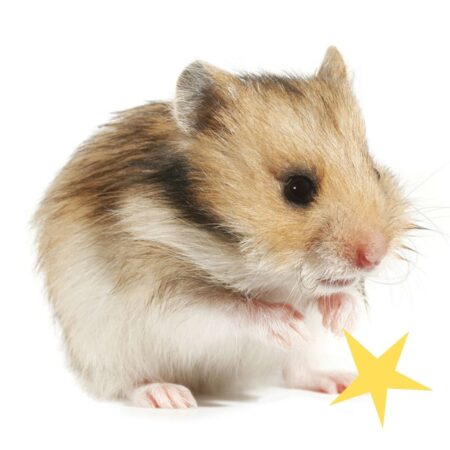 The dietary requirements of hamsters and guinea pigs are probably the most significant difference between the two species. Hamsters are omnivorous and will eat pretty much anything they can find. They famously store food in their cheeks for later, making their cute faces puff up, almost doubling the animal’s size.
The dietary requirements of hamsters and guinea pigs are probably the most significant difference between the two species. Hamsters are omnivorous and will eat pretty much anything they can find. They famously store food in their cheeks for later, making their cute faces puff up, almost doubling the animal’s size.
The easiest option for feeding a hamster is to buy a pre-made food mix that has all the things they need, rather than sourcing your own insects and extra protein to supplement the plants and vegetables in their diets. You can feed your hamster fresh fruit and vegetables, as long as they are washed, and as long as they don’t completely replace the hamster mix. Grains and cereals make a good addition to their diets, too. Also, be sure to provide your hamster with something to chew on, such as a piece of wood or some straw, as this helps keep their teeth in check.
Unlike hamsters, guinea pigs are vegetarian. In the wild, they eat fruits, plant roots and – most importantly – lots of high-fibre grasses. As with hamsters, domestic guinea pigs should be fed a specially made food mix. However, these often have lots of carbohydrates and not enough fibre. For this reason, your guinea pigs will also need lots of fresh vegetables, fruits, grass and hay alongside their food mixes. Hay is crucial for keeping the guinea pigs’ teeth in check, and it also ensures a healthy balance in the stomach bacteria the animals need for digesting their food efficiently.
4. Space
Hamsters are always kept indoors, as they need to be kept somewhere consistently warm. Being small creatures, they don’t need a huge amount of living space, and an enclosure such as the Qute can be incorporated into a room as an attractive part of the furniture as long as they are taken out of the cage for daily exercise and play.
Guinea pigs, in contrast, need a larger hutch and a run, as they are not only bigger than hamsters but need to be kept in groups. Some are kept indoors throughout the year, but if you have space for a guinea pig run in the garden, the animals will love it, and children will be able to interact with their pets in the most effective way.
The upshot here is that a hamster can be easily accommodated if you only have a small indoor space, but a guinea pig can’t.
Overall, both hamsters and guinea pigs make great pets, and both are low maintenance. The key differences between the two are size, lifespan and diet. When choosing which of these wonderful little animals to keep, it mainly boils down to personal preference. As long as you care for them properly, they will soon form a close bond with you.
This entry was posted in Guinea Pigs on September 7th, 2021 by linnearask

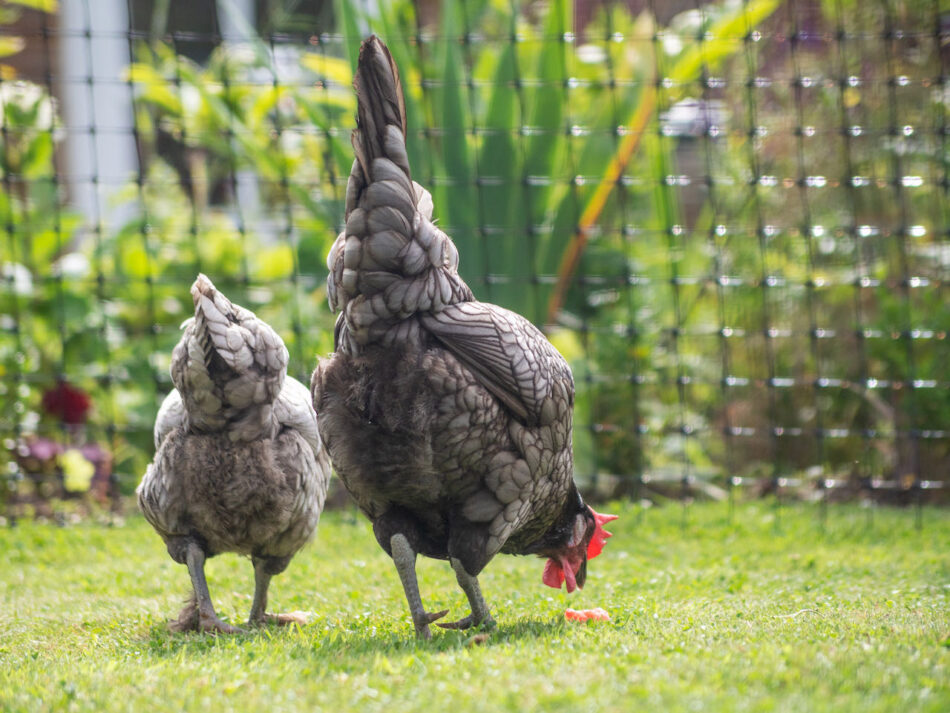 As the days get shorter, you might find that your chickens are not laying as much as they normally do. Egg production is partly regulated by daylight hours, and the more light the chickens see, the more eggs they will lay. Other factors that can affect the production are moulting, broodiness and your hens getting older.
As the days get shorter, you might find that your chickens are not laying as much as they normally do. Egg production is partly regulated by daylight hours, and the more light the chickens see, the more eggs they will lay. Other factors that can affect the production are moulting, broodiness and your hens getting older.
But if you find that you’re collecting significantly less eggs than you did six months or a year ago, there might be some things you can do to encourage your hens to start laying again and get the most eggs possible from your flock. Have a look at our tips below!
1. Choose the right breeds
If eggs are the number one reason you keep chickens, you should make sure you pick hens for your flock that through generations have been bred to lay. Bantams or more decorative breeds like Polish and Silkies generally lay relatively few eggs, as do the larger breeds that were developed for meat.
The ideal egg layer is also hesitant to sit on her eggs, and rarely go broody. Some examples of breeds that lay many eggs are Australorp, Sussex, Rhode Island Red and Leghorns.
2. Give your hens a good quality feed
It’s always important to give your chickens the best possible quality feed you can, but extra important if you want them to produce eggs. A good feed should have a good amount of protein (16-20% depending on the age of your chickens) as well as important vitamins and minerals.
If you feed your chickens treats, they should be kept to a minimum, and be low in fat. Fat or obese chickens will not lay, so make sure they fill up on good feed, a handful of corn, and maybe some delicious worms from the garden. That should keep your hens happy and healthy, and hopefully laying regularly.
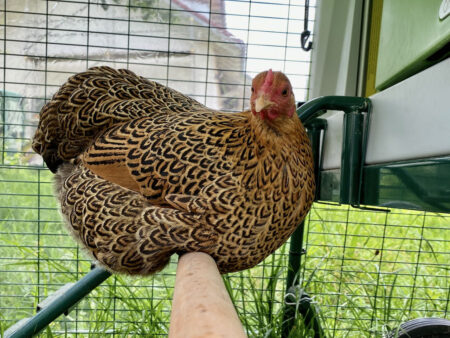 3. Minimise stress
3. Minimise stress
Chickens that experience stress on a daily basis will put all their energy into being constantly on their toes, and will produce no or very few eggs.
Make sure your birds feel safe in their chicken coop and where they are free ranging. A predator resistant coop and run, like the Eglus, will allow your chickens to roost away from any danger. Try to keep cats and dogs away from the area where your chickens are roaming, and let the hens come to you rather than chasing them around the garden.
Generally, hens will also feel most comfortable when you have a clear routine. Let them out of the coop around the same time every day (made super easy with an automatic chicken coop door), feed them the same feed at the same place, and put them to bed when they’ve all returned to the coop.
Sometimes it’s impossible to avoid a certain amount of stress, for example if you’re moving the hens to a new place or are introducing new chickens to your flock. The chickens should return to their normal laying pattern once things have calmed down, but you could experience a few weeks of disturbed laying.
4. Give them plenty of calcium
Chickens need calcium to create strong egg shells. A good feed will contain a fair amount, but you should also provide your laying hens with an additional source, most commonly oyster shell or crushed, baked egg shells. You can read more about this topic on our previous blog How Long Can Chicken Eggs Stay in the Coop?
5. Provide fresh water
A chicken can drink up to a pint of water a day (!), so it’s important to give your flock plenty of fresh, clean water. Chickens will happily drink from muddy puddles and other water sources, but as standing water can contain bacteria and parasites it’s always best to make sure they have plenty of clean water to drink from their drinker.
This is especially important in the warmer months, as a dehydrated chicken will not lay, but also make sure the water doesn’t freeze in winter.
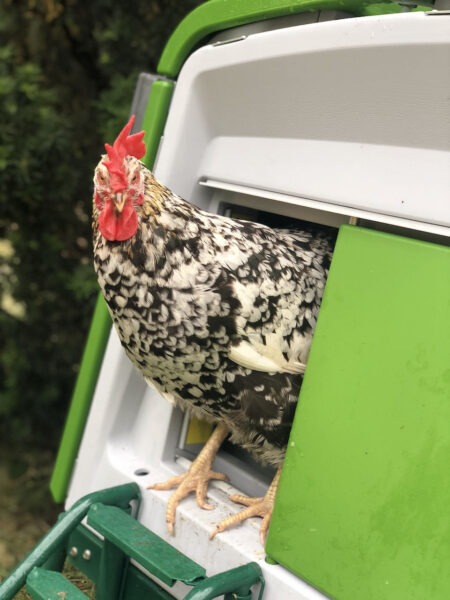
6. Keep parasites at bay
Mites are the number one culprit when it comes to a decreased egg production. They suck blood from the chickens’ legs at night, resulting in the hens being anemic and too tired to lay. Fleas and lice can really annoy chickens and make them stressed, and internal parasites like worms will lower your hens’ immune system and possibly make them very ill.
Get into the habit of checking your chickens over every, or every other, week by picking them up and going through their face, feet and feathers. That way you will be able to spot a potential problem early, and hopefully treat it before it affects your pets and their egg production. You can read more about giving your chickens a health check here.
7. Keep the chicken coop clean
Just like you and I, chickens don’t like sleeping, eating and socialising in mess and dirt. Their idea of cleanliness might look slightly different from ours, but if you want your chickens to be happy and healthy and lay plenty of eggs, you must make sure the coop and the run are tidy and free from poo and dirt.
With a chicken coop like the Eglu Cube, making sure the hens’ home is clean is super easy. Thanks to the wipe down surfaces and the handy pull out dropping tray, it will only take minutes to clean the coop.
Fill the nest boxes with plenty of soft bedding so your hens have somewhere comfortable to lay.
8. Provide more space
Lack of space can lead to a lot of stress for chickens. While roosting they prefer sitting close together in the coop, but during the day it’s important that they have a good amount of space to move around on.
If you chickens aren’t laying, maybe consider giving them a slightly larger run or area to free range on. Or if you have introduced new hens to your flock, it might be time to buy a second coop to house one half of the group.
Chickens, like most animals, have a defined number of eggs in their bodies, and once they have used up their reserves, nothing you do will make them produce more delicious eggs. If you have rescued ex battery hens for example, the rate of egg laying might slow down quite quickly, despite the hens still being young, as they have lived in an environment where they were manipulated to lay as much as possible, as quickly as possible.
It’s also good to remember that chickens are not machines, and their bodies will sometimes just need a rest. This doesn’t mean they will never lay again, so don’t give up on them! After all, as well as eggs, our chickens provide us with plenty of entertainment and companionship, and they deserve to be properly cared for however many eggs they produce.
This entry was posted in Chickens on September 6th, 2021 by linnearask
Omlet launch customisable indoor cat tree system
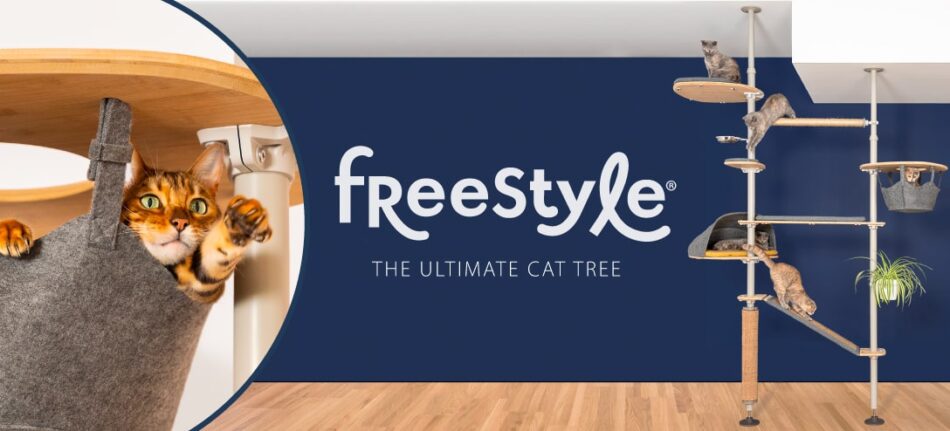
There are an estimated 12.2 million cats in the UK, and numbers have increased significantly after a year of lockdown. The majority of UK cat owners view cats as more than just pets, but as an important and loyal source of happiness, affection and love. With all they do for us, the least we can provide them with is a way to let them be exactly what they are meant to be – cats!
According to the annual PDSA Paw Report, obesity is seen as one of the top 5 welfare concerns for cats by veterinary professionals, and it’s estimated that a shocking 39 to 52 percent of cats in the UK are overweight or obese. Most of these are indoor cats who are limited in terms of exercise and movement, which often leads to frustration and behavioural problems, as well as health issues.
As a nation we clearly need to get these tubby tabbies moving, and Omlet has got the perfect solution!
The new and innovative Freestyle Cat Tree is a floor to ceiling, completely customisable cat play system available with a wide range of fun accessories that will encourage cats to live out their natural behaviours – jumping, climbing, grooming, stretching and scratching, as well as a fair bit of serious relaxing. By providing an irresistible opportunity to exercise and explore, Omlet hopes that cats will be able to find the joy in playing that they might have lost after years of rickety scratching posts and dull fluffy toys.
Even the laziest of cats won’t be able to resist exploring this amazing play system, which in combination with a well balanced diet will make them lighter and leaner, healthier and happier!
The Freestyle Cat Tree centers around strong, extendable vertical poles that can be accessorised with platforms, steps and scratching posts, and connected with ramps and bridges. It’s got everything cats need, including optional dens or hammocks where cats can hide away from the world and properly relax. As an added bonus, it will look great in any home, and can be adjusted in numerous ways to allow cat owners to cater to their pets’ needs.
Omlet’s Head of Design, Simon Nicholls, said: “We wanted to acknowledge that not all cats are the same and create a cat tree that was customisable and extendable over time, and that could provide indoor cats with everything they needed. The versatility of this product is truly unique and we can’t wait for cats around the world to explore it!”

This entry was posted in Cats on September 2nd, 2021 by linnearask
While the kids are away, the pets will play!
Start the new school year with 20% off selected Back To School Buys when you spend £30 on qualifying items. Look out for the pencil symbol on out website to find all the included items, or choose some of out favourites ✏️
Terms and conditions
This promotion is only valid from 02/09/21 – midnight on 06/09/21. Use promo code BACK2SKWL at checkout to get 20% off when you spend £30 on selected products. While stocks last. Must spend £30 on items displaying on the website with pencil icon for 20% off to work. Subject to availability. Omlet ltd. reserves the right to withdraw the offer at any point. Offer cannot be used on delivery, existing discounts or in conjunction with any other offer.
This entry was posted in Budgies on September 2nd, 2021 by linnearask











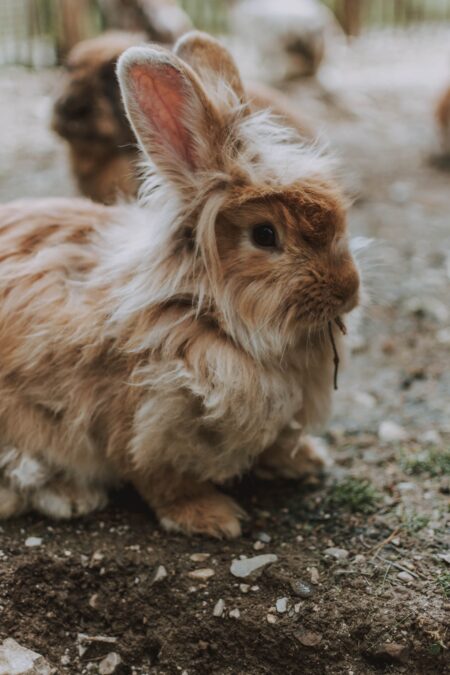
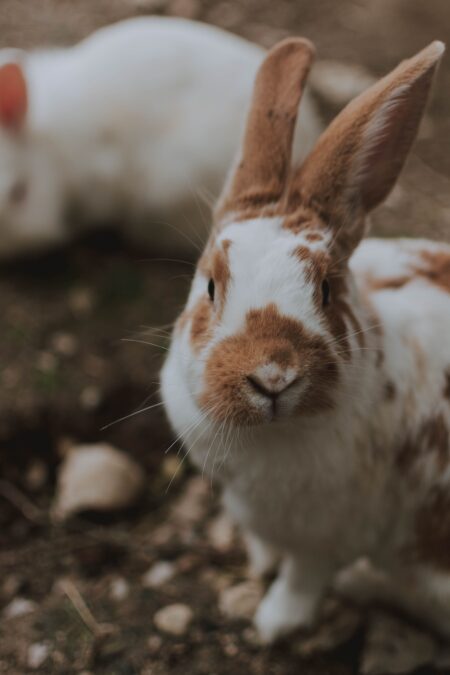



 Unfortunately, bullying amongst chickens happens, and isn’t actually too uncommon of a problem. Chickens naturally create a pecking order, whereby the flock will establish themselves in a social hierarchy of strongest to weakest chicken. However, if aggressive behaviour continues after the head rooster, or the dominant hen in their absence, has found their way to the top of the ladder, you may be dealing with a bully. Common signs are missing feathers from a chicken’s back, unusual weight loss, reduced egg production, or blood from where the victim has been pecked, all of which could lead to a chicken/s refusing to go into their coop at night.
Unfortunately, bullying amongst chickens happens, and isn’t actually too uncommon of a problem. Chickens naturally create a pecking order, whereby the flock will establish themselves in a social hierarchy of strongest to weakest chicken. However, if aggressive behaviour continues after the head rooster, or the dominant hen in their absence, has found their way to the top of the ladder, you may be dealing with a bully. Common signs are missing feathers from a chicken’s back, unusual weight loss, reduced egg production, or blood from where the victim has been pecked, all of which could lead to a chicken/s refusing to go into their coop at night.









 While these two critters do have things in common, their different habitats and ways of life mean that a hamster’s home setup is very different from that of a guinea pig.
While these two critters do have things in common, their different habitats and ways of life mean that a hamster’s home setup is very different from that of a guinea pig. The dietary requirements of hamsters and guinea pigs are probably the most significant difference between the two species. Hamsters are omnivorous and will eat pretty much anything they can find. They famously store food in their cheeks for later, making their cute faces puff up, almost doubling the animal’s size.
The dietary requirements of hamsters and guinea pigs are probably the most significant difference between the two species. Hamsters are omnivorous and will eat pretty much anything they can find. They famously store food in their cheeks for later, making their cute faces puff up, almost doubling the animal’s size.
 As the days get shorter, you might find that your chickens are not laying as much as they normally do. Egg production is partly regulated by daylight hours, and the more light the chickens see, the more eggs they will lay. Other factors that can affect the production are moulting, broodiness and your hens getting older.
As the days get shorter, you might find that your chickens are not laying as much as they normally do. Egg production is partly regulated by daylight hours, and the more light the chickens see, the more eggs they will lay. Other factors that can affect the production are moulting, broodiness and your hens getting older. 



